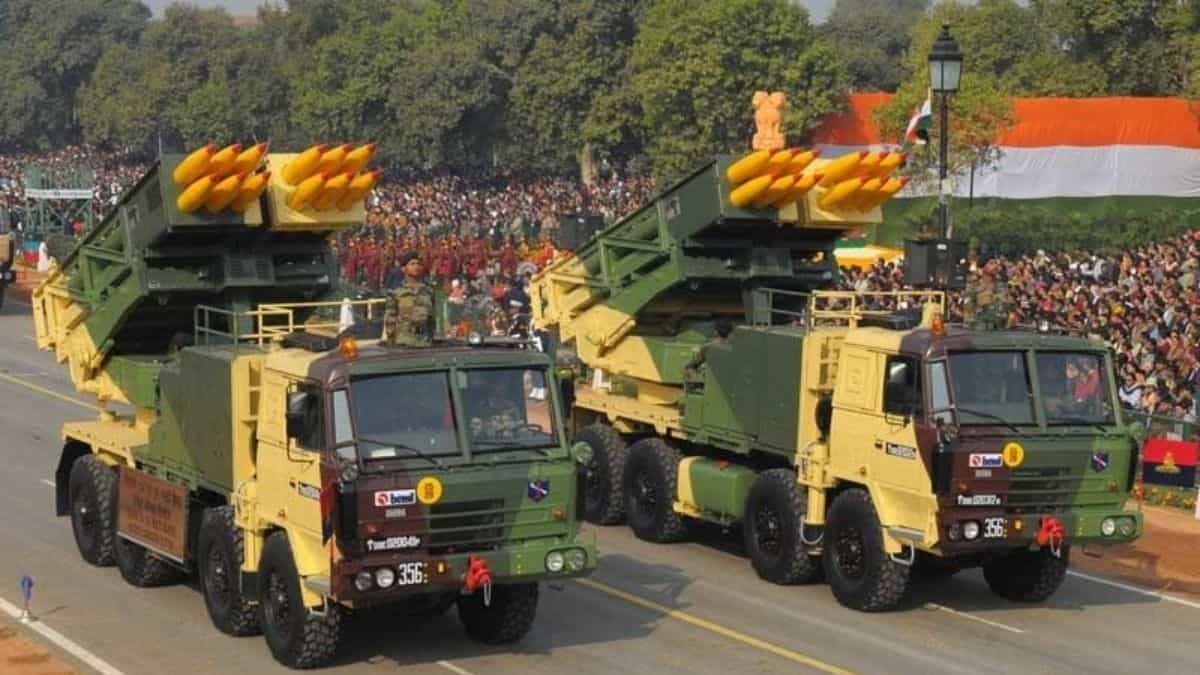Top Indian Artillery guns that are in service with the Indian Army

Large guns used by armies, such as cannons and howitzers, are referred to as artillery. These guns are used to hit targets from a long distance. Artillery is frequently used to keep enemy forces out of a zone, to bombard enemy positions and buildings, and to reinforce the friendly side. Artillery refers to a wide range of weapons. It’s possible that they’ll launch shells or missiles. In order to stop enemies, newer systems can even deploy mines across a large area. Anti-aircraft artillery is used to combat planes and other aircraft. For various operations, the Indian army employs modern artillery equipment, and the Regiment of Artillery has participated in a number of successful military campaigns. Here is a list of top Indian Artillery guns that everyone is afraid of:
120 mm E1 Light Mortar
120 mm HE mortars bullets typically weigh between 1,270g and 4,200g and have a range of 7,200 to 9,500 metres. Mortars with a calibre of 120 mm are by far the most common heavy mortars in use worldwide. Smoothbore and rifled 120 mm mortars are both in use. The mortar is used to provide infantry support by destroying enemy personnel and fire positions, opening paths, destroying enemy targets, destroying infrastructure, lighting up the battlefield, and creating smoke screens.
105 mm Light Field Gun
The 105 mm Indian Field Gun (IFG) was designed and handed over to the Gun Development Team in Jabalpur for production.
122 mm D-30 Howitzer
The D-30 is a towed howitzer manufactured by the Soviet Union. It was developed in the late 1950s to replace the earlier M-30, which saw service during WWII. Despite using the same ammunition as the M-30, the D-30 is a far more capable design with significantly higher performance. The D-30 is the world’s most widely deployed piece of artillery. It was mass-produced in large quantities and licenced in other countries.
130 mm M-46 Field Gun
The M-46 is a Soviet field gun developed in the 1940s and first deployed in the early 1950s. When it was first spotted by the West, it was given the interim name “M1954” in honour of the year it was first recognised by NATO. The Indian army adapted this to create the Sharang Artillery Gun.
Haubits FH77
It’s a 155mm self-propelled howitzer manufactured by Bofors in Karlskoga, Sweden. It is self-contained and capable of supporting both traditional combat operations and current international peacekeeping and peace enforcement missions.
Dhanush
Dhanush is a 155 mm 45-calibre towed artillery cannon with a 36-kilometer range and a 38-kilometer range when using specially designed ammunition. It takes the place of the old 155m Bofors FH 77 cannon. Dhanush has been approved for use in 2019.
M777 howitzer
The M777 can hit over long distances regardless of terrain or impediments. With a small logistical footprint and high dependability, the system is highly portable by land, sea, and air. This means that it can be transported and re-deployed on a regular basis, increasing survivability while avoiding the IED risks those self-propelled devices face.
DRDO Advanced Towed Artillery Gun System
DRDO developed a 155mm, 52 calibre towed artillery cannon in collaboration with Tata Power SED and Bharat Forge. It was first displayed in public on January 26, 2017, during the 68th Republic Day parade.
FV433 Abbot SPG
The FV433 Field Artillery, Self-Propelled “Abbot” is a self-propelled artillery derivative of the British Army’s FV430 series of tanks, with a fully rotatable tower at the rear housing a 105 mm gun. In the Indian army, the K9 Vajra, a variant of the K9 Thunder, has now replaced these.
K9 Thunder/K9 Vajra
The K9 Thunder is a 155mm/52 calibre self-propelled howitzer built by Hanwha Techwin, formerly known as Samsung Techwin, for the Republic of Korea Armed Forces. The howitzer is designed to provide effective and deep fire support in all types of theatres. The K9 has a high rate of fire at a long range and is built on a chassis with high mobility. K9 Vajra is the variant that has been modified for desert and high-temperature conditions, with a number of Indian components.

